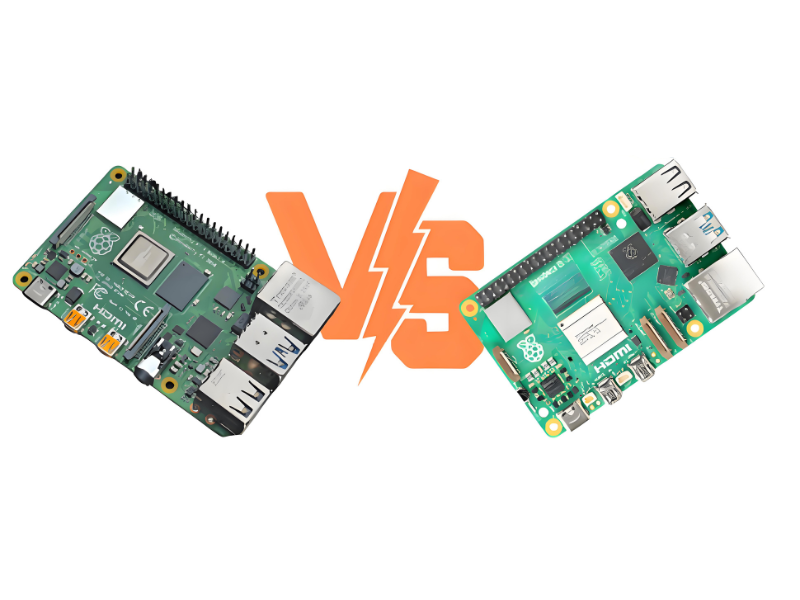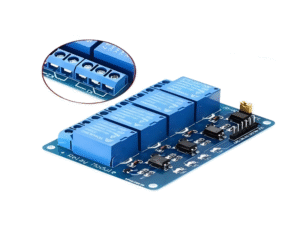The Raspberry Pi series has long been a favorite among hobbyists, educators, and professionals for its versatility and affordability. With the release of the Raspberry Pi 5 in October 2023, the foundation has raised the bar yet again. But how does it stack up against its predecessor, the Raspberry Pi 4? Let’s break down the key differences.
1. Performance Boost
The most significant upgrade lies in the processor. The Raspberry Pi 4 uses a Broadcom BCM2711 chip with a quad-core Cortex-A72 CPU clocked at 1.5–1.8 GHz. The Pi 5, however, debuts the Broadcom BCM2712, featuring a quad-core Cortex-A76 architecture with a base clock speed of 2.4 GHz. This leap translates to 2–3× faster CPU performance, making the Pi 5 far more capable for resource-intensive tasks like AI prototyping, media servers, or even light desktop use.
The GPU also gets a refresh. While the Pi 4 uses a VideoCore VI GPU, the Pi 5 adopts the VideoCore VII, supporting dual 4Kp60 HDMI outputs (compared to the Pi 4’s dual 4Kp30). This makes the Pi 5 a better fit for high-resolution displays and graphics-heavy applications.
—
2. I/O and Connectivity
The Pi 5 introduces several hardware improvements:
– PCIe 2.0 Support: A dedicated PCIe interface allows direct NVMe SSD connectivity via an adapter, bypassing USB bottlenecks for faster storage. The Pi 4 lacks this feature.
– Enhanced GPIO: The 40-pin GPIO header now includes dedicated power pins for peripherals, reducing the need for external USB hubs.
– Dual USB 3.0 + Dual USB 2.0 Ports: Both models share this setup, but the Pi 5’s USB controllers are more efficient, enabling faster data transfers.
Network connectivity remains similar, with Gigabit Ethernet and dual-band Wi-Fi (2.4/5 GHz) on both boards. However, the Pi 5’s Bluetooth version is upgraded to 5.0/Bluetooth Low Energy (BLE), improving compatibility with modern peripherals.
—
3. Power and Efficiency
The Pi 5’s power requirements have increased. It needs a 5V/5A USB-C power supply (vs. 5V/3A for the Pi 4), partly due to its higher-performance components. While this means slightly higher power consumption under load, the board introduces a new power-saving mode for idle states.
Thermal management is also improved. The Pi 5 supports active cooling natively with a built-in fan connector, addressing thermal throttling issues seen in the Pi 4 during prolonged workloads.
—
4. New Features
– Real-Time Clock (RTC): The Pi 5 includes an RTC for timekeeping, eliminating the need for external modules.
– Power Button: A first for the series, the Pi 5 has a programmable power button for graceful shutdowns.
– Camera/Display Flexibility: Two separate MIPI connectors allow simultaneous use of dual cameras or displays, a limitation on the Pi 4.
—
Should You Upgrade?
The Raspberry Pi 5 is a substantial upgrade for users needing more horsepower, faster I/O, or advanced features like NVMe support. For basic projects (e.g., retro gaming, IoT sensors), the Pi 4 remains a cost-effective choice. However, if you’re pushing the limits of the Pi 4—whether with 4K video, AI workloads, or storage-heavy apps—the Pi 5’s improvements justify its slightly higher price tag.
In short, the Raspberry Pi 5 isn’t just iterative—it’s a generational leap that redefines what’s possible with a credit-card-sized computer.


